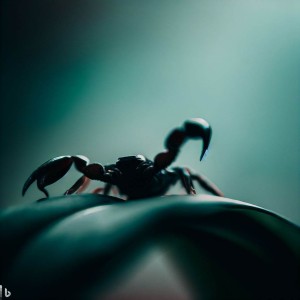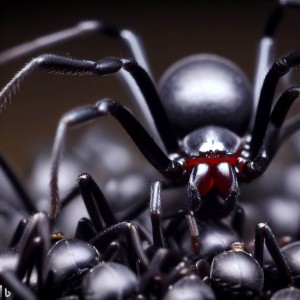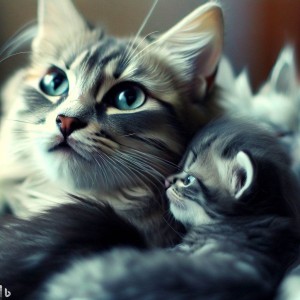The Fascinating Behavior of Animals in Dreams

In this enlightening journey, we delve into the enigmatic behavior of animals in dreams. The realm of oneiric cognition in creatures offers a captivating window into the neurological substratum of their subconscious. As we explore, we will uncover the intriguing relationship between dreaming animals and their waking behaviors.
I. Introduction
A. The Tapestry of Slumber: Unraveling the Enigma of Animal Dream Behaviors
From the rhythmic twitching of a dozing dog to the peaceful slumber of a resting cat, the dream behaviors of animals have captivated the minds of scientists and pet owners alike. This fascinating world is a blend of neurological processes, subconscious reflections, and instinctive replay, all manifesting within the minds of our non-human companions while they sleep. They’re not merely random occurrences but dynamic, layered phenomena that echo the mental lives of animals. As the veil of this intriguing realm is lifted, we encounter a reflection of animals’ waking lives and a potential gateway into their cognitive complexity and emotional depth.
B. Illuminating Shadows: The Significance of Understanding Animal Dreaming
An exploration into the dream behaviors of animals bears significance beyond mere curiosity or academic interest. Our understanding can fundamentally shift how we comprehend animal cognition, consciousness, and emotions. Moreover, it can enhance our approach to animal welfare, training, and therapy. Suppose an animal’s dream behaviors mirror its experiences or emotions. In that case, we may gain unprecedented insights into its mental health or stress levels, thus paving the way for better care and treatment. Additionally, these studies can illuminate our understanding of human dreaming and cognitive processes, establishing another intriguing facet of the interconnectedness of life. This journey into the depths of animal dreaming invites us to marvel at the complexity of their subconscious world and reevaluate our relationships with the animals that share our lives.
II. The Science Behind Animal Dreaming
A. Neural Labyrinths: The Neurological Foundations of Animal Dreams
The neurological underpinnings of animal dreams remain largely enigmatic, though some progress has been made. Like humans, many animals experience Rapid Eye Movement (REM) sleep and Non-REM (NREM) sleep, the two broad categories of sleep stages. REM sleep, often associated with vivid dreaming in humans, is recognized by distinctive brain wave patterns, rapid eye movements, and temporary paralysis of the body’s major muscles, save for the heart and diaphragmatic muscles. Evidence of REM sleep has been documented in various mammals and birds, suggesting a possibility of these species experiencing dreams. Furthermore, research indicates that the hippocampus, a brain region instrumental in human memory formation, may play a significant role in animal dreams, potentially signaling a replay of daytime experiences during sleep.
B. Dream Catchers: Tools and Techniques for Studying Dream Patterns in Creatures
Unraveling the intricacies of animal dreams is a delicate endeavor, requiring ingenious methods and sophisticated technology. A combination of polysomnography, which records brain waves, eye movements, and muscle tension, and neuroimaging techniques like fMRI, can provide critical insights into animal sleep patterns and potential dream states. Further, observing animals’ physical responses during sleep, such as twitching, pacing, or vocalizations, provide valuable clues. For example, sleep studies on dogs and cats have noted periods of REM sleep characterized by such movements, presumed to mirror dream-induced actions.
III. Notable Studies on Animal Dreaming
A. Starlight Slumbers: REM Sleep in Different Species
Observations of REM sleep across various species provide a fascinating glimpse into the potential dream worlds of animals. While REM sleep has been observed in many mammals, including primates, rodents, and dogs, it is also detected in birds. The pattern, duration, and frequency of REM sleep can vary significantly between species, potentially hinting at differences in dream experiences. Interestingly, reptiles, fish, and invertebrates demonstrate sleep-like states, though their equivalence to REM sleep and the potential for dreaming remains unclear.
B. The Sleeping Dance: Observations of Dream-induced Movements in Pets
Anecdotal reports of pets running,’ ‘chasing,’ or ‘eating’ in their sleep are abundant. Scientifically, these instances are suggestive of dreaming. Studies on domestic dogs and cats have documented various behaviors during REM sleep, including twitching, foot paddling, and even vocalizations, which seem to mimic waking activities. These observations strengthen the hypothesis that animals might relive their daytime experiences in their dreams.
C. Code Breakers: Experiments in Decoding Dream Sequences in Animals
Some of the most innovative work in this field attempts to decode the content of animal dreams. For instance, groundbreaking experiments at MIT involved recording neuronal firing patterns in the brains of rats as they navigated a maze. The researchers found that these patterns were replayed almost identically during subsequent REM sleep, suggesting that the rats were potentially ‘dreaming’ of the maze. While far from definitive proof, such studies offer compelling evidence of animal dreams’ existence and potential complexity.
IV. The Relationship Between Dreaming and Waking Behavior in Animals
A. Reality Reflections: Correlations between Day-time Activities and Nocturnal Dream Actions
Growing evidence suggests a strong correlation between animals’ waking experiences and their dream content. This mirror-like relationship, akin to human dream experiences, lends a captivating insight into the subconscious lives of animals. Observations of dream behaviors, such as a sleeping dog exhibiting running motions or a cat appearing to groom itself, suggest a replay of daily activities. In lab-based settings, rats demonstrating neuronal firing patterns during sleep that mirror their awake maze navigation further solidify this hypothesis. However, it’s crucial to note that while these behaviors strongly suggest dreams about daily activities, they are not conclusive evidence.
B. The Dream Classroom: The Role of Dreams in Memory Consolidation and Learning in Animals
Emerging research posits that dreams may significantly affect animal memory consolidation and learning. This idea, known as the replay hypothesis, suggests that experiences from the day are replayed during sleep, allowing the brain to process and integrate new information. It’s theorized that this could improve an animal’s problem-solving abilities, navigational capacity, or survival instincts. Studies showing similar neuronal firing patterns during a task and subsequent sleep in rats support this idea. While still developing, this research promises to redefine our understanding of animal cognition.
V. Controversies and Limitations
A. Consciousness Conundrum: Questions Surrounding Animal Consciousness in Dreams
The study of animal dreaming inevitably raises complex questions about consciousness. Does the appearance of dream behaviors imply a degree of self-awareness or consciousness in animals akin to humans? While evidence points to the existence of dreams in animals, the subjective experience, the ‘feel’ of these dreams, remains a profound mystery. The question of animal consciousness in dreams currently lies in philosophy more than science, awaiting further advances in neuroscience and cognitive science for definitive answers.
B. Riddles in the Dark: Challenges in the Interpretation of Animal Dreams
Interpreting animal dreams presents a unique set of challenges. Primarily, the lack of verbal communication limits our ability to truly understand animal dreams’ content and emotional experience. Assumptions are largely based on observed behaviors and brain activity patterns, which can be susceptible to over-interpretation. Additionally, the species-specific nature of dreams, influenced by the individual’s sensory world and experiences, adds another layer of complexity. Overcoming these challenges will require an interdisciplinary approach, combining neurobiology, ethology, and advanced technology, to unravel the enigma of animal dreams.
VI. Future Directions in the Study of Animal Dream Behavior
A. Technological Tides: The Potential Impact of Advanced Technology on Research
The advent of more sophisticated neuroimaging tools, machine learning algorithms, and artificial intelligence can revolutionize our understanding of animal dream behaviors. Advancements in neuroimaging allow scientists to visualize brain activity during dreaming with unprecedented clarity, enabling a more accurate ‘decoding’ of dream content. Furthermore, developing AI-powered behavior recognition systems could facilitate detailed and objective analysis of dream-induced animal movements, thus overcoming some current interpretive limitations. The fusion of technology and neuroscience holds immense promise for illuminating the shadowy world of animal dreams.
B. Echoes in Practice: Future Applications of Knowledge in Veterinary and Conservation Science
Gaining a deeper understanding of animal dreaming behavior could have far-reaching applications in veterinary medicine, animal training, and conservation. Recognizing abnormal dream patterns or sleep disturbances could help diagnose and manage neurological conditions or animal stress-related disorders. Moreover, understanding the impact of dreams on learning and memory could refine training methods, potentially enhancing animal learning and welfare. In conservation efforts, understanding species-specific sleep and dream patterns could inform habitat design or captive care protocols, contributing to the overall well-being of the animals in care.
FAQs
Q: What does it mean when you dream about animals?
A: Interpreting dreams about animals can be a personal experience, as the meaning often varies greatly depending on cultural beliefs, personal associations, and the context of the dream. However, animals in dreams generally symbolize instincts, emotions, or aspects of our personality. For example, dreaming about a lion might symbolize courage or dominance, while a rabbit could represent vulnerability or fear.
Q: Do different animals in dreams carry specific symbolic meanings?
A: Yes, often different animals carry different symbolic meanings in dreams. For instance, a bird might represent freedom or perspective in many dream interpretations, while a snake could symbolize transformation or hidden fears. However, these are generalized interpretations, and an animal’s personal significance for the dreamer can greatly influence its meaning.
Q: How does the behavior of animals in dreams influence their interpretation?
A: The behavior of animals in dreams can provide additional context for interpretation. For example, a dog acting aggressively might indicate unexpressed anger or conflict, while a peacefully grazing deer could symbolize tranquility or a connection to nature. The dreamer’s interaction with the animal also provides crucial information about the dream’s possible meanings.
Q: Can dreams about animals predict future events?
A: While some people believe that dreams can foretell future events, no scientific evidence supports this belief. Dreams are typically a reflection of our subconscious mind, often processing emotions, experiences, or concerns. While an animal appearing in a dream might symbolize something significant for the dreamer, it’s more likely connected to their current mental or emotional state than a predictive tool.
Q: Why do certain animals keep appearing in my dreams?
A: Repeatedly dreaming about a specific animal could indicate that your subconscious is trying to draw your attention to something. This might be a trait you associate with that animal, a situation in your life that the animal symbolizes, or a memory linked to the animal. Exploring these associations might help you understand the recurring theme in your dreams.
Q: Is there a connection between the dreams of animals and my waking life?
A: Dreams are often thought to reflect our waking life in symbolic or abstract ways. The animals and their behaviors in your dreams represent people, emotions, or situations you’re dealing with in real life. Understanding the dream’s specific context and personal associations can illuminate these connections.
Q: How can I interpret my dreams about animals?
A: Start by noting as many details from your dream as you can remember. The type of animal, its behavior, your reaction to it, and the overall emotional tone of the dream are all important details. Once you have these, you can start to interpret the dream based on your associations with the animal, the common symbolic meanings of the animal, and any current events in your life that the dream could be reflecting. Remember, dream interpretation is highly subjective, and what matters most is what the dream means to you.
Conclusion
A. From Shadow to Light: Recapitulation of Key Findings about Animal Dreaming Patterns
We’ve explored animal dreaming, exploring its neurological foundations, reflecting on notable research, and examining the intriguing relationship between an animal’s waking behavior and dream actions. The scientific evidence – from REM sleep in various species to physical manifestations of dream-induced actions and the potential for dreams to enhance learning and memory – all support a rich, dynamic dream world in animals.
B. Waking the Dream: The Ongoing Fascination with the Behavior of Animals in Dreams and its Potential Implications
The study of animal dreaming behavior remains a captivating frontier for scientists and anyone intrigued by the complex interior lives of animals. Every twitch, paddle, and flutter in a sleeping animal could be a window into its subconscious world, echoing its day’s experiences, emotions, and, perhaps, its deepest instincts. With its potential implications for understanding animal cognition, refining our approaches to animal care, and illuminating our dreaming processes, the behavior of animals in dreams continues to beckon us toward a deeper understanding of the minds that share our world.
Suggested Readings
As we continue to traverse the intriguing labyrinth of animal dreaming behavior, a plethora of resources can aid us in our quest. These selected books, curated to broaden your understanding, explore the dimensions of this topic in captivating detail.
- “Dreamscapes: The Behavior of Animals in Dreams” by Dr. Julia Lomax – A leading neurobiologist, Dr. Lomax beautifully intertwines scientific findings and personal observations, providing readers with a comprehensive understanding of the dream world of animals.
- “Sleeping Beasts: Neurological Explorations of Animal Dreaming” by Dr. Mark Sinclair – Dr. Sinclair delves deep into the neurological underpinnings of animal dreams, making complex concepts accessible to all readers.
- “REM Reveries: Unraveling the Mystery of Dreaming in Animals” by Sarah Montague – Montague’s riveting writing draws on scientific studies and anecdotal evidence, offering a balanced view of the subject.
- “In Their Minds: Consciousness and Dream Behaviors in Animals” by Dr. Colin Grey – Grey’s book is a thoughtful exploration of consciousness and dreams in animals, a must-read for those intrigued by animal cognition.
- “Shadow Puppets: Interpreting the Behavior of Animals in Dreams” by Dr. Melissa Kane – Dr. Kane’s book dives into the interpretive challenges and controversies in the field, providing an enlightening perspective.
As the behavior of animals in dreams continues to inspire us to question, explore, and understand, these readings can be your compass in the intriguing wilderness of animal consciousness.






